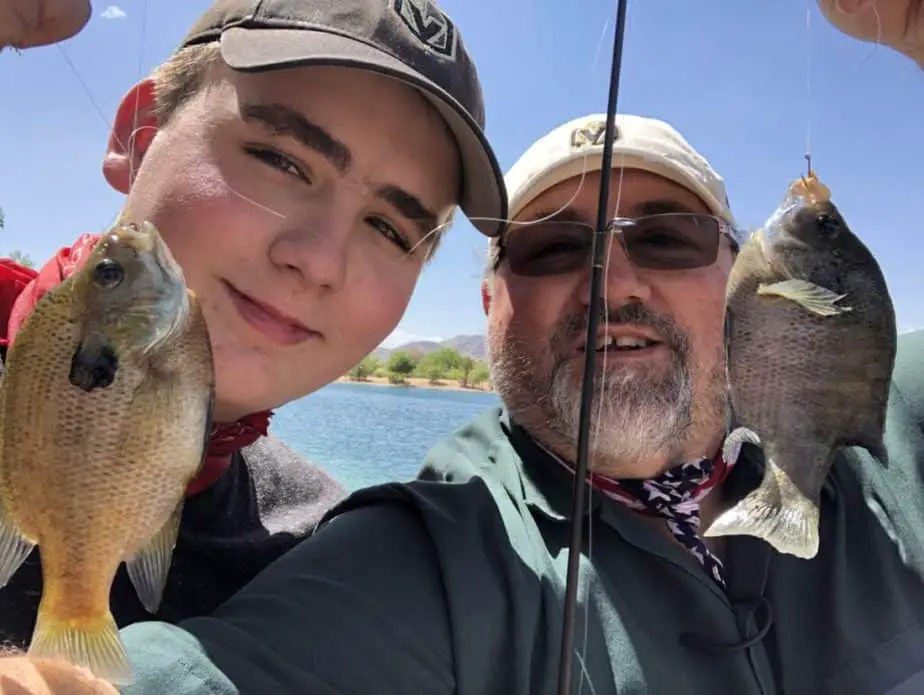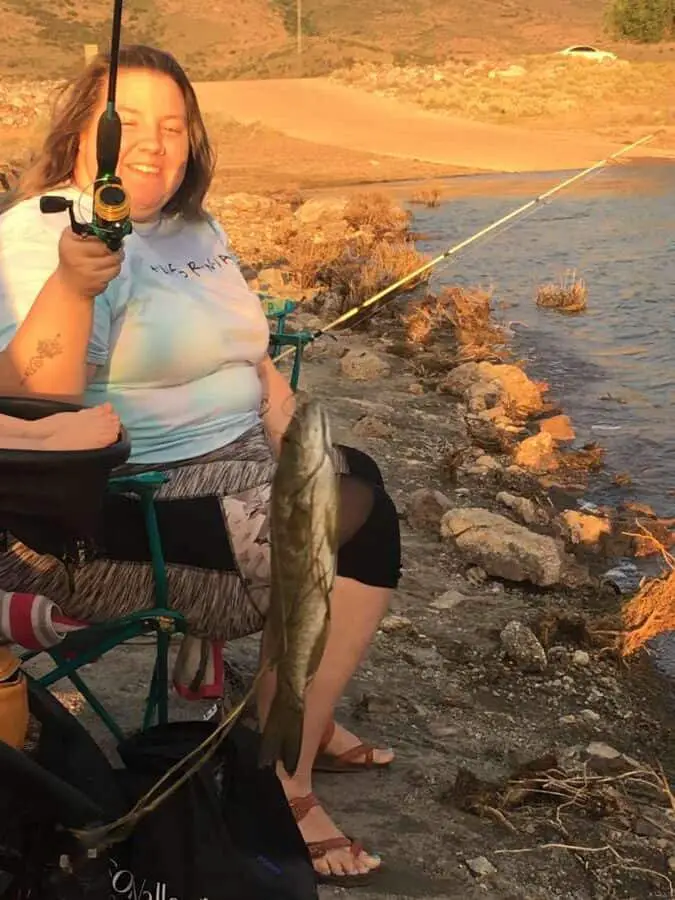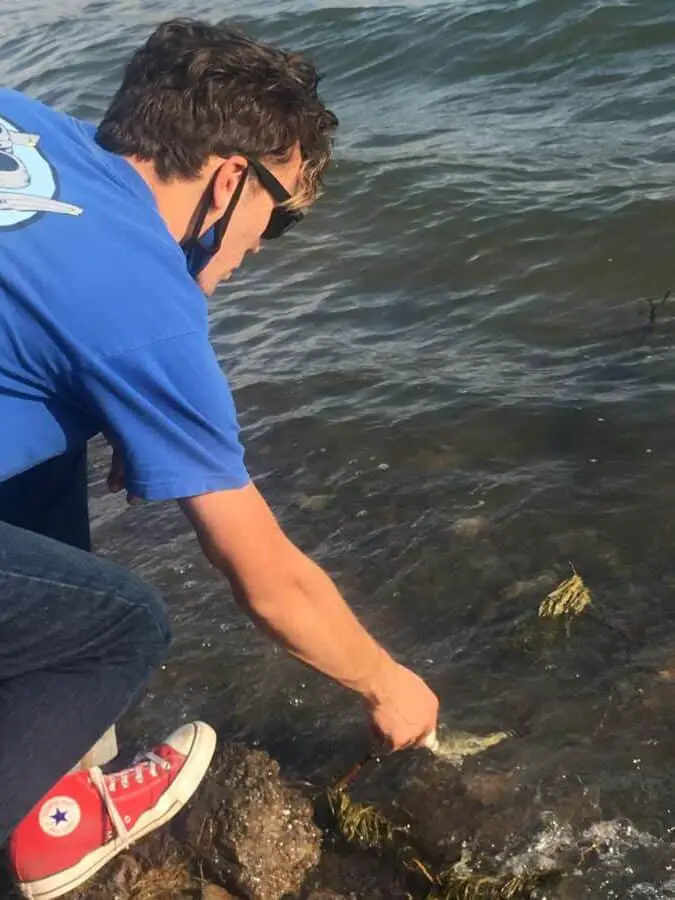They say there is nothing in life that is without controversy, and this is certainly true when it comes to the pastimes that we all hold dear. Indeed, it doesn’t matter what recreational hobby you choose, there will be some debate within it over something. Although fishing seems like it would be devoid of such issues, unfortunately it has its fair share as well. As you are out on the lake, do you ever think about whether the fishing you are doing harms the fish? That is a good question, but it really isn’t one with an easy answer.

Of course, if you talk to a PETA official, they will be very adamant in their answer: They will punctuate it with a big “YES!” and tell you to avoid your fishing hobby at all costs. However, this isn’t as cut-and-dried as these PETA individuals would have you believe.
Naturally, if you’re like the millions of other anglers out there, you’ve been raised on the belief that catch-and-release is the best way to engage in your passion. However, there has been research in the last decade – albeit hotly-debated research – that now claims that catch-and-release actually gives the fish some type of psychological trauma.
So, where’s the middle ground here? Do we all need to stop engaging in our hobby and start taking up chess, painting, or poetry? Or is it possible that we can continue this pursuit without any guilt, or without the fear of some PETA radical holding up a megaphone to our face every time we cast out a line? The answer to that question probably lies somewhere in the middle, but here are some angles that we could look at.
Does it really matter in the first place?
We’ll start off with a bit of a rhetorical question here. So what? So what if fishing is harmful to the fish? Isn’t catch-and-release so much better than just keeping the fish, killing the fish, and eating it? Moreover, isn’t it a little bit ridiculous to talk about how inhumane it is to do catch-and-release, anyway? Here is a play on words for you: when it comes to catch-and-release, yes, the fish is indeed DEDICATED.
However, what about the other animals we encounter? When you consider the fact that most of us as human beings regularly consume hot dogs, which are frankly made from the remains of pigs after all of the other parts have been harvested and made into either ham, bacon, or sausage.

Thus, essentially, any time that you eat ham, bacon, sausage patties, or hot dogs, you are being much worse than when you are engaging in your fishing hobby. Do you enjoy a nice juicy steak every now and then? Same difference. What about those pork chops you had the other day?
Well, you are being cruel to the pig yet again by eating from its spine! Thus, performing catch-and-release is much more humane to the fish than some of the other animals that we regularly use for food.
What about us humans being at the top of the food chain?
Of course, many PETA activists will protest about us being at the top of the food chain, and doesn’t that mean that we have a responsibility to these lower forms of life? Well, insofar as us being at the top of the food chain, the answer to that question is yes and no.
Yes, we might be at the top of the food chain because of our ability to reason and our ingenuity. However, if we are running from a grizzly bear, do you think we are at the top of the food chain then? Absolutely not, and trust me, the bears are not going to form an organization called BETH (Bears For The Ethical Treatment of Humans)!
No, the bear doesn’t care if it kills us; they just look upon us as food and nothing more. Moreover, if you are swimming in a sea of great white sharks, you unfortunately will quickly figure out that at least in that situation, even as a human being you are not at the top of the food chain. These animals don’t care when they harm us, so why should we?
Do fish feel pain?
Of course, the other wrinkle to all of this is a question that someone with PETA is likely to throw at you: what about your fish feeling pain? What about when your fish is being caught and it is struggling against your hook? Isn’t your trout, salmon, bass, or catfish going to be in terrible pain over this?
Well, again, there is much debate to this, and just tell your PETA friend that there has actually been numerous studies that claim that no, the fish DO NOT feel pain. Huh? Yes, you read that right…several very intelligent university researchers have come to the conclusion that fish don’t have the capacity for pain. How so? Here is their explanation:
The fish lack the brain power.
Simply put, these researchers came to the conclusion that the fish simply lack the brain function to feel pain. We as humans can very easily feel pain because we have a portion of our brain called the neocortex that is highly developed. Of course, in our case this is a good thing simply because if we didn’t feel pain we would be in danger of getting further hurt and damaging our bodies in a litany of ways.
However, we digress here. Back to the fish. The best way to sum this up is that the fish simply don’t have a highly developed neocortex. Yes, it’s there, but it’s not even remotely as advanced as the humans trying to catch them have it.
What about the fact that fish have “nociceptors”?
Of course, the next thing that your garden variety anti-fishing zealot will claim is that fish do indeed have that thing called the “nociceptor”, which in humans is responsible for helping us to feel pain.
However, that being so, there was still some research from universities as prestigious as the University of Wyoming that posited that while the fish do indeed have these components, they are so minute that the only they do for them is to trigger an instinctive, unconscious reaction. In layman’s terms, the fish aren’t feeling pain, it’s just another thing they do, akin to spawning in the spring.

Fish react to pain much differently than humans do.
Because human beings have a cortex, they usually will react to pain through a system of stimulus-experience-consideration-reaction. For example, let’s say a human being accidentally touches a hot surface, such as a stove. First of all, they experience the stimulus of the hot surface, Then, they “consider” it.
What does this feel like? Well, it definitely hurts. Then, they react. In this case, the reaction would most often be simply just pulling their hand away. Of course, ask any angler and they will tell you that it certainly appears that the fish are responding to the pain of being hooked.
For instance, they might viciously swim or flop to avoid them. However, according to these researchers the fish are simply engaging in a “one-directional” mental process. They are simply just automatically responding to the stimulus.
Indeed, there was even one researcher who took it a step further: they actually did something to the fish that would have been very disturbing and very painful had it been done to humans. They literally drilled hole in a fish’s head and yet the behavior of the fish was not even significantly altered that much at all! The fish almost seemed oblivious to the fact that it was now a deformed fish with a hole in its head.
Furthermore, this researcher also argued that there is a long list of behaviors in fish that would appear to be due to conscious thought, but are actually just simply automatic learning and avoidance behaviors and nothing more.
If you want to read a research report about fish pain you can check out this PDF here.
There is still a lot we don’t know about conscious thought in other organisms.
Even though there is a lot of debate on this topic, science hasn’t proven conclusively that fish are capable of conscious thought. Most of the time, the individuals that insist that fish cannot feel pain will simply point out to the detractors that they also know very little about the conscious thought of fish.
Either way, no one will really know completely what goes on in the mind of a fish. Moreover, when it comes to studying conscious thought in marine and animal life, science still doesn’t have any completely accepted fundamental laws.
You would be hard-pressed to find anyone who cares more about the fishing stock than an experienced angler.
Although it’s been a long process, most anglers have now learned that simply doing catch-and-release activities is much more humane to the fish than the typical catch-and-kill methodology. First of all, these anglers realize that it will help the fishing spot continue to have a good size and number of fish. Secondly, they are realizing that they can continue to be engaged in their hobby much easier by simply throwing the fish back. There have been a number of studies from fisheries that show that at the minimum, 95 percent of released fish survive, and in most cases up to all (100%) of the fish live on when they are simply caught and released.
Still, even though there are plenty of people out there who believe that it is perfectly humane to do catch-and-release with their fishing pastime and who don’t feel that fishing is harmful to fish, there are still some anglers out there who might still be in doubt over it. To those who feel this way, I say that there is no reason for you to abandon the hobby altogether. All you have to do is just employ some safe catch-and-release practices. Think about doing some of the following:
Perform the catch-and-release quickly.
After you catch the fish, handle it as quickly as possible. This is especially true in warmer-weather, because cold-blooded species of northern pike or walleye will get stressed very quickly.
You should release the fish as quickly as possible. Have your camera ready so that you can get a good photo and then don’t waste any time simply throwing the fish back. You also should avoid putting the fish in a live well, as that has a tendency to reduce the odds of survival. Fish in these circumstances will often have much higher mortality rates. Even individuals at tournaments have noticed this.
Avoid touching the gills of the fish.
Another thing that you never want to do is to touch the gills of the fish. If your fish begins bleeding from the gills, it is basically a foregone conclusion that they are going to have serious problems and probably won’t survive.
Avoid touching the fish with your bare hands.
Another mistake that some anglers make would be in attempting to touch the fish with their bare hands. Indeed, the last thing you want to do is have a fish’s skin dry out on you. The reason is simple: all fish scales are composed of protective mucus that help prevent them from having reactions to exposure and from drying out too fast. You should consider wearing gloves to help assist the fish that have been caught.
Use the right hooks.
Finally, when it comes to catch and release, one of the best things you can is to use a circle hook. This is because it will come out of the fish much easier than hooks with barbs on them.
Try to avoid exhausting the fish.
You also should try to bring the fish to the shore or to the boat as quickly as possible. If a fish is getting exhausted, it literally could be a death sentence for them.
Conclusion
Although it won’t ward off everything, if you simply follow some of these simple practices, it will help you immensely in avoiding harassment from those who think fishing is inhumane. Plus, it’s simply the right thing to do because it’s easier on the fish. Fishing is both an art and a science, and you should keep these two principles in mind when you decide to fish.
Are you seriously looking turn your hobby into a business? I recommend joining Income School. I’ve been an Income School member for a little over a year and joining was the best decision I’ve made in working toward my business goal of making money online.
If you have social media or a blog or even a business in fishing like a fishing guide, you can make money by giving away $10 store credit to your friends and followers. Click Here to find out how

